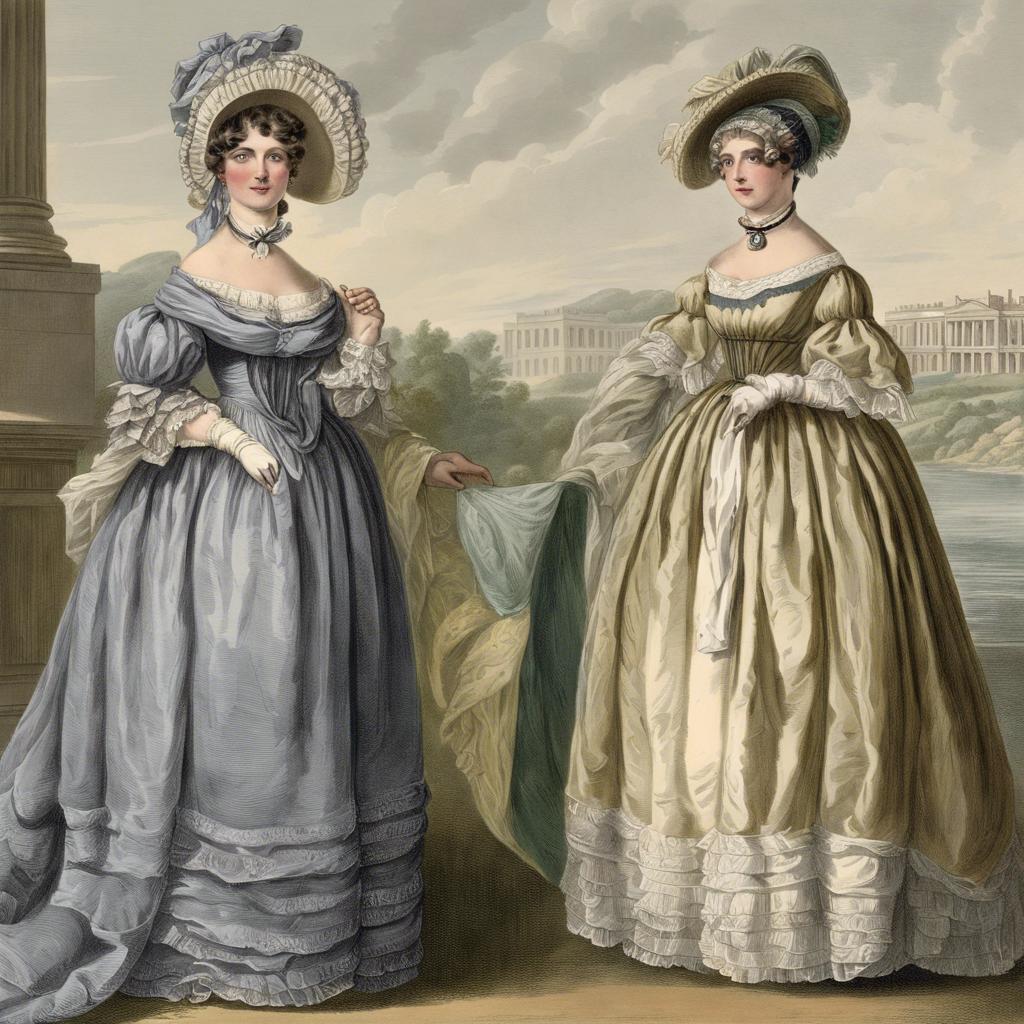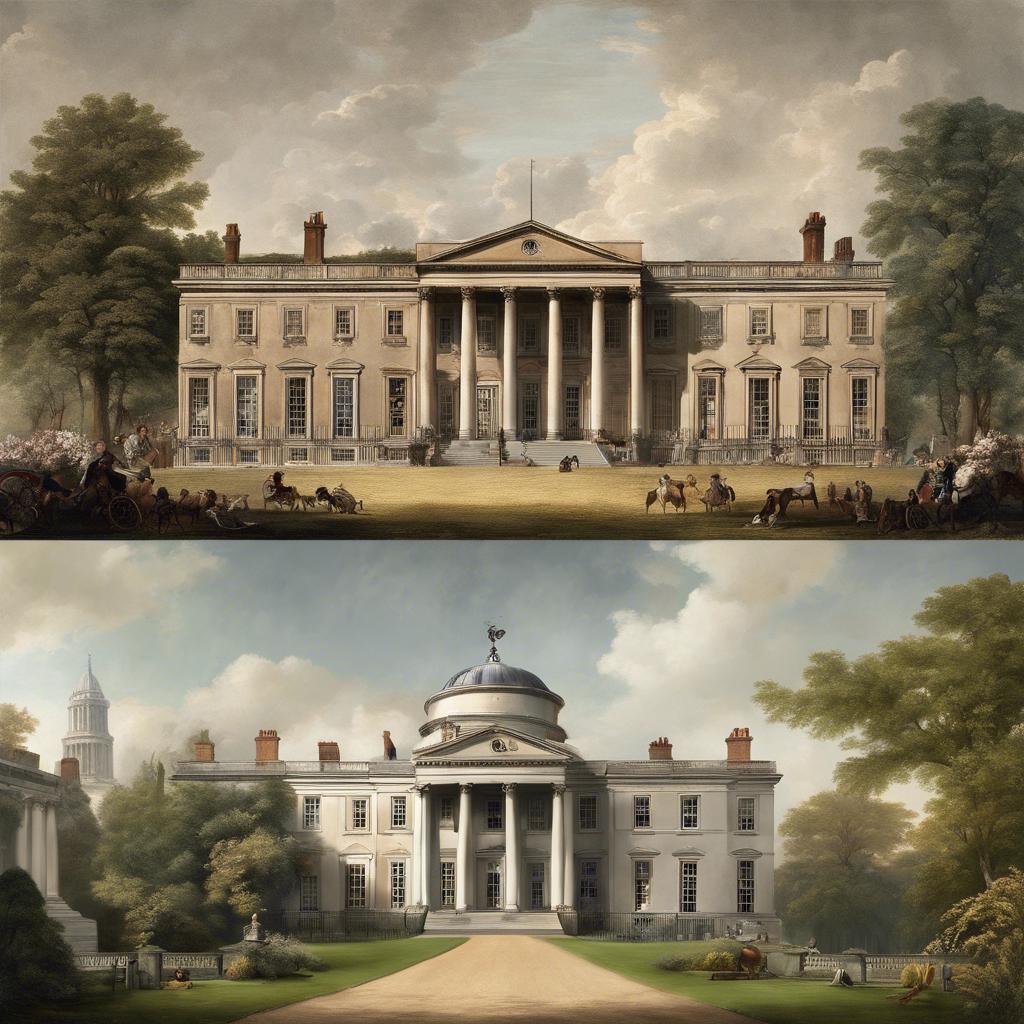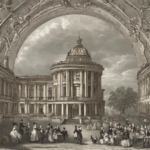The Regency Era and the Georgian Era are two distinct periods in British history that have left a lasting impact on society, culture, and politics. Though they are often grouped together, each era has its own unique characteristics and defining features that set them apart from one another. In this article, we will delve into the differences between the Regency Era and the Georgian Era, exploring the social, economic, and political changes that occurred during each period, and examining how they continue to shape our understanding of British history today.
Step Into the World of Cheryl Bolen
Dive into the enchanting stories of love, intrigue, and elegance set in the Regency Era. Cheryl Bolen's novels offer timeless romance and captivating tales that will leave you wanting more.
Explore Cheryl Bolen's Books Now
Regency Era Fashion and Society: A Comparison to the Georgian Era
In the Regency Era, fashion and regency era and racism”>society underwent significant changes compared to the Georgian Era. One of the most notable differences was the shift in clothing styles, with the Regency period being characterized by more relaxed and lightweight garments. The Georgian Era, on the other hand, was known for its elaborate and intricately designed clothing, reflecting the opulence and extravagance of the time.
During the Regency Era, society also experienced a shift in values and attitudes, with an emphasis on individualism and personal expression. This was in stark contrast to the Georgian Era, where societal norms and expectations were more rigid and traditional. The Regency period saw the rise of the Romantic movement, which influenced not only fashion but also art, literature, and politics.
| Regency Era | Georgian Era |
|---|---|
| Emphasis on individualism | Rigid societal norms |
| Lightweight and relaxed clothing | Elaborate and opulent garments |
the Regency Era marked a shift towards a more progressive and liberated society, both in terms of fashion and societal values. This period laid the foundation for many of the cultural movements that would define the 19th century, making it a pivotal time in history that continues to influence our perceptions of fashion and society today.
Architectural Styles in the Regency and Georgian Periods: Contrasts and Influences
In the Regency era, architecture saw a shift towards more delicate and refined designs, reflecting the tastes of the time. Buildings from this period often featured intricate details such as delicate moldings, elegant columns, and decorative motifs inspired by classical Greek and Roman architecture. The emphasis was on creating light and airy spaces, with a focus on symmetry and proportion.
Conversely, the Georgian era was characterized by more grand and imposing architectural styles. Georgian buildings were known for their symmetrical facades, large windows, and ornate details such as cornices and pilasters. The influence of Palladian architecture was prominent during this period, with a focus on proportion and harmony in design. Georgian architecture often exuded elegance and sophistication, with a sense of stability and permanence.
Despite the contrasts between the Regency and Georgian styles, there were also influences that carried over from one era to the other. Both periods drew inspiration from classical architecture, with a focus on order, symmetry, and proportion. Elements such as grand entrances, formal gardens, and sweeping staircases were common in buildings from both eras, reflecting a shared appreciation for architectural beauty and harmony.
Literature and Arts: A Cultural Analysis of the Regency Era Versus the Georgian Era
During the Regency Era, which spanned from 1811 to 1820, there was a significant shift in cultural norms and artistic expression. This period was characterized by a focus on elegance, refinement, and societal etiquette. In literature, we saw the rise of romanticism and the works of authors like Jane Austen, whose novels explored themes of love, marriage, and class distinctions.
On the other hand, the Georgian Era, which preceded the Regency Era, was marked by a more flamboyant and extravagant style. This period, from 1714 to 1837, saw the emergence of neoclassical architecture, opulent fashion, and a celebration of wealth and status. In the arts, artists like Thomas Gainsborough and Joshua Reynolds captured the grandeur and sophistication of the era in their paintings.
When comparing the two eras, we can see a contrast between the restrained elegance of the Regency Era and the lavishness of the Georgian Era. While both periods were characterized by a focus on art, literature, and culture, they each reflected the values and attitudes of their time. The Regency Era embraced a more subdued and refined aesthetic, while the Georgian Era embraced a more ostentatious and extravagant style.
Recommendations for Further Exploration: Resources for Delving Deeper into Regency and Georgian History
For those who wish to delve deeper into the intricacies of Regency and Georgian history, there are a plethora of resources available that offer a more in-depth look into these fascinating eras. These resources can provide valuable insights into the societal norms, cultural practices, and political landscapes of the time. Here are some recommendations for further exploration:
Regency Era:
- Read Jane Austen’s novels, such as “Pride and Prejudice” and “Sense and Sensibility,” to gain a better understanding of the social customs and class hierarchies of the Regency period.
- Explore the works of historical fiction authors like Georgette Heyer, who have expertly captured the essence of the Regency era in their writing.
- Visit museums and historical sites in England, such as the Jane Austen’s House Museum in Hampshire or the Royal Pavilion in Brighton, to immerse yourself in the world of Regency England.
Georgian Era:
- Dive into the political history of the Georgian era by reading biographies of key figures such as King George III and Prime Minister William Pitt the Younger.
- Explore the artistic achievements of the period by studying the works of renowned painters like Thomas Gainsborough and Joshua Reynolds.
- Visit historic landmarks like Buckingham Palace and St. James’s Palace in London to get a firsthand look at the architecture and design aesthetic of Georgian England.
In Summary
both the Regency Era and the Georgian Era were significant periods in British history, each characterized by their own unique cultural, social, and political developments. From the grandeur of Georgian architecture to the elegance of Regency fashion, these eras have left a lasting legacy that continues to inspire and captivate us today. As we reflect upon the differences and similarities between these two remarkable periods, we gain a deeper appreciation for the rich tapestry of history that has shaped the world we live in. So, let us continue to explore and learn from the past, and carry forward the traditions and innovations of the Regency and Georgian eras into the future.


